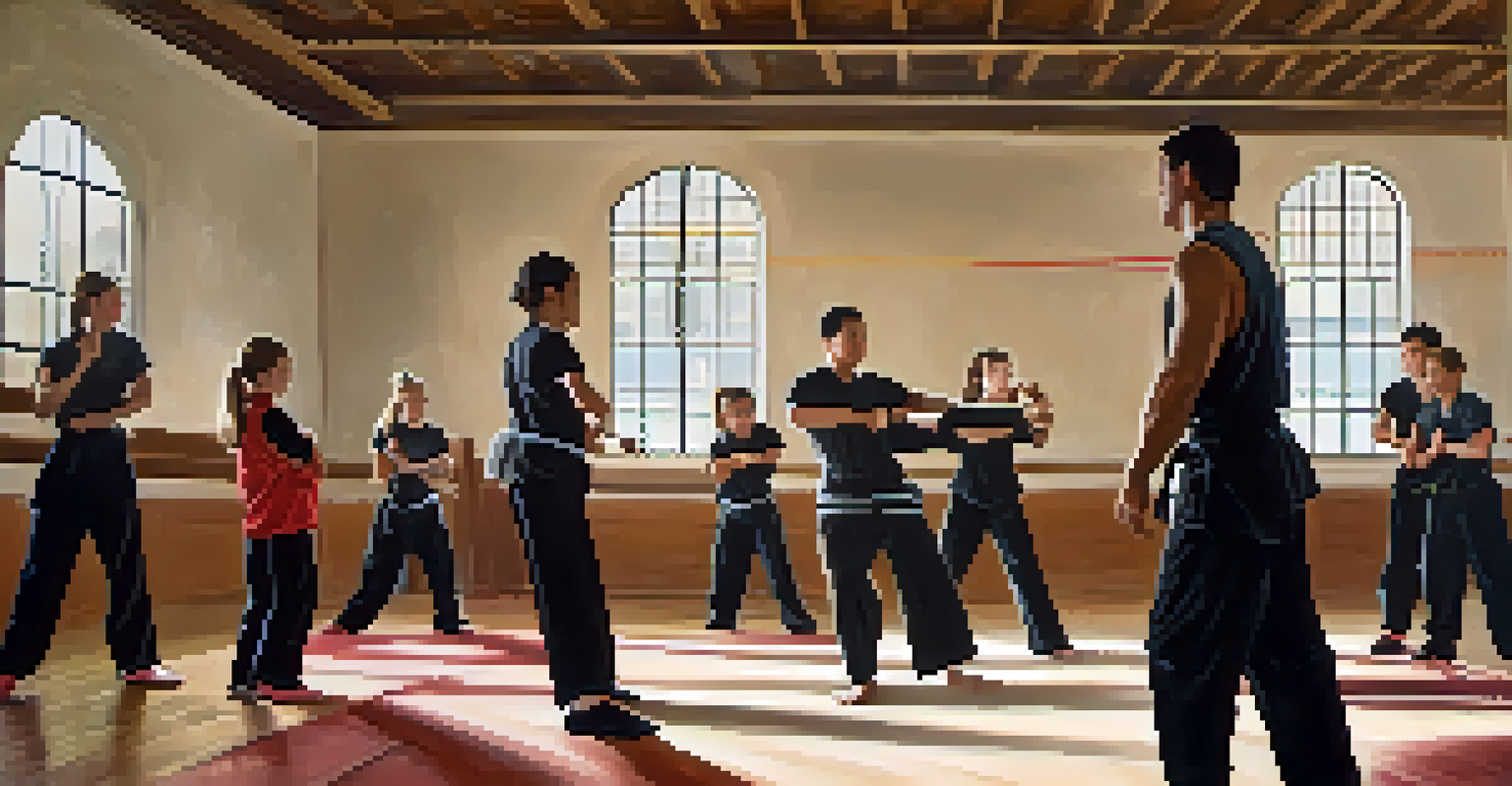The Myth of the 'One-Punch' Self Defense Technique

Understanding the One-Punch Self Defense Myth
The idea of a 'one-punch' self defense technique is alluring. It suggests that with just one perfect strike, you can neutralize any threat. However, this notion oversimplifies the complexities of real-life self-defense situations.
The best defense is a good offense, but the best offense is knowing when to walk away.
In reality, self-defense involves a myriad of factors including the environment, the attacker’s size, and the nature of the threat. It's not just about strength; timing, technique, and awareness play crucial roles.
Additionally, the portrayal of this technique in movies and media can skew our expectations, leading many to believe that self-defense is as easy as a single punch.
The Reality of Self Defense Situations
Self-defense situations are often chaotic and unpredictable. An attacker may not be deterred by a single strike, especially if they are larger or more aggressive. This unpredictability can escalate the situation quickly.

Moreover, adrenaline and fear can cloud judgment, making it difficult to execute even the simplest techniques effectively. The idea that one punch can solve everything ignores the reality of human behavior under stress.
Self-Defense Needs More Than Strength
Effective self-defense requires a combination of awareness, strategy, and mental preparedness rather than relying solely on physical power.
Therefore, relying on the one-punch myth can leave individuals ill-prepared for actual confrontations, which is a significant concern for personal safety.
Physical Techniques vs. Mental Preparedness
While physical techniques are vital, mental preparedness is equally important in self-defense. Understanding your surroundings and recognizing potential threats can often prevent a confrontation before it starts.
It's not the size of the dog in the fight, it's the size of the fight in the dog.
Training in self-defense should focus on awareness, de-escalation tactics, and understanding body language. These skills can help individuals avoid dangerous situations altogether.
Ultimately, the ability to react calmly and effectively in a high-stress situation often outweighs the significance of any single physical technique.
The Importance of Comprehensive Training
Effective self-defense training encompasses more than just learning how to throw a punch. It includes grappling, escape techniques, and even verbal de-escalation strategies.
A well-rounded approach to self-defense prepares individuals for various scenarios, rather than just teaching them to rely on a single move. Skills such as situational awareness and conflict resolution are crucial.
De-Escalation is Key to Safety
Utilizing de-escalation techniques can often prevent physical confrontations, highlighting the importance of communication and conflict resolution.
By focusing on comprehensive training, individuals can develop a toolkit of strategies that empower them to handle threats more effectively, rather than hoping for a one-punch solution.
The Role of Confidence in Self Defense
Confidence plays a significant role in self-defense. When individuals believe in their abilities, they are more likely to react appropriately in a crisis. This can make a substantial difference in the outcome.
Training builds not only skills but also self-assurance, allowing individuals to navigate confrontations with a level head. A confident demeanor can sometimes deter potential attackers.
Thus, cultivating confidence through practice and preparation is an essential aspect of effective self-defense beyond just physical techniques.
Recognizing the Limitations of Physical Power
Physical strength can be an advantage, but it is not the only determinant of success in self-defense. Many individuals, regardless of size, have successfully defended themselves using skill and strategy.
Relying solely on the idea that a 'one-punch' technique will work can lead to overconfidence, which may result in poor decision-making during critical moments.
Confidence Enhances Self-Defense Skills
Building confidence through training enables individuals to react appropriately in crisis situations, improving overall self-defense effectiveness.
Understanding the limitations of physical power encourages individuals to focus on technique, timing, and the importance of situational awareness.
Emphasizing De-Escalation Techniques
De-escalation techniques are often overlooked in discussions about self-defense. Learning how to diffuse tension verbally can be far more effective than physical confrontation.
By employing calm communication and body language, individuals can often avoid the need for physical self-defense altogether. This approach emphasizes the importance of peaceful conflict resolution.

Training in these techniques not only enhances safety but also fosters a mindset geared toward understanding and empathy rather than aggression.
Conclusion: A Balanced Approach to Self Defense
In conclusion, the myth of the 'one-punch' self-defense technique is just that—a myth. Effective self-defense relies on a mix of awareness, strategy, mental preparedness, and physical skills.
By debunking this myth, we can encourage individuals to seek comprehensive training that prepares them for real-life situations rather than unrealistic expectations.
Ultimately, understanding the complexities of self-defense empowers individuals to protect themselves better and respond appropriately in any situation.